Japanese fish koi: This article will teach you essential facts about caring for koi fish. It will also help you figure out whether or not you should buy a koi pond or get a koi fish tank instead.

Japanese fish koi: Koi Fish History

Did you know that the ancient Chinese believed that koi were created by the gods as gifts to humans? Or that koi were originally called “goldfish”? And did you know that koi fish care is essential for keeping them healthy and happy?
Well, now you do!
Let me share some interesting facts about koi fish history and koi fish care.
First off, koi fish history goes back thousands of years. The ancient Chinese believed that kai fish were created by the gods to give humans happiness. They believed that if you kept koi fish, you’d be blessed with prosperity and happiness.
But there was a catch. To keep koi fish, you had to feed them with special foods. If you fed koi fish with regular food, they wouldn’t grow large enough to please the gods. So the ancient Chinese developed special diets for koi fish.
For example, the diet included rice flour mixed with water, which made koi fish grow larger. The diet also contained vegetables such as cucumber, cabbage, and radish. These ingredients helped koi fish grow bigger and stronger.
Another important fact about koi fish history is that koi fish care became essential after World War II. After the war, Japan suffered from severe shortages of food and resources. Because of these shortages, many people started eating meat instead of rice. This led to a decrease in population growth, and eventually resulted in a shortage of labor force.
To solve this problem, the government decided to import workers from Korea and Taiwan. But since these workers came from different countries, they couldn’t understand each other. Therefore, they needed help communicating.
This is where Japanese Fish Koi history comes in handy. Since koi fish care became necessary during the postwar period, people began learning how to communicate with each other through koi fish care. Today, koi fish care is considered an art form.
Now let’s talk about koi fish care. Did you know that koi care is essential for keeping koi fish healthy and happy? Well, here’s another interesting fact about koi fish care…
If you don’t take proper care of koi fish, they’re at risk of developing diseases. Diseases such as white spots, red eyes, and fin rot can cause serious health problems for koi fish. Fortunately, koi fish care helps prevent these diseases.
For example, koi fish care includes feeding them with specific types of food. Some common foods include raw carrots, spinach, lettuce, and green beans. Other foods include fruits such as apples, oranges, bananas, strawberries, and melons. Kaiten sushi, a popular type of Japanese sushi, is also beneficial for koi fish. Kaiten sushi contains fresh seafood, including shrimp, salmon, tuna, and squid.
Finally, Japanese Fish Koi care involves providing adequate space for koi fish. When koi fish are crowded together, they tend to fight over food. As a result, they eat too little and become weak. On the other hand, when koi fish are given plenty of room, they grow faster and healthier.
What is the best type of tank for Japanese Fish Koi ?

Japanese Fish Koi:There are many different types of tanks available for keeping Japanese koi fish. Which ones work best?
To answer this question, we must first understand some basic facts about koi fish care.
First, there are two kinds of water conditions: natural water condition and artificial water condition. Natural water conditions include ponds, lakes, rivers, streams, etc., where koi fish live naturally. Artificial water conditions include aquariums, tanks, basins, pools, etc., where kai fish live artificially.
Second, there are three main types of tanks: freshwater tanks, saltwater tanks, and mixed tanks. Freshwater tanks contain only fresh water. Saltwater tanks contain both fresh water and sea water. Mixed tanks contain both fresh water as well as sea water.
Third, there are four major types of water conditions: natural, semi-natural, controlled, and un-controlled. Natural water conditions are those which occur naturally. Semi-natural water conditions are those which are similar to natural conditions, but may require some human intervention. Controlled water conditions are those which require constant monitoring and maintenance. Un-controlled water conditions are those which cannot be monitored and maintained.
Now let’s look at each type of tank.

Freshwater Tanks
Freshwater tanks are ideal for keeping koi fish. They provide excellent water quality, temperature control, and filtration. The downside is that they’re difficult to maintain. If you’re interested in learning more about freshwater tanks, check out my article here.
Saltwater Tanks
Saltwater tanks are ideal for maintaining koi fish health and appearance. They provide excellent water clarity, temperature control, and filtering. The downside is that saltwater tanks are expensive. If you’re interested, check out my article on saltwater tanks here.

Mixed Tanks
Mixed tanks are ideal for keeping both freshwater and saltwater koi fish together. They offer excellent water quality, temperature regulation, and filtration, as well as mixing fresh and saltwater. The downside is that mixed tanks are difficult to maintain. Check out my article on mixed tanks here.
Artificial Water Conditions
Artificial water conditions are ideal for growing koi fish. They allow koi fish to grow quickly and easily. However, they lack the benefits of natural water conditions. To learn more about artificial water conditions, check out my article about them here.
Which Type Is Best for My Japanese Fish Koi ?
If you’re wondering whether one kind of tank is better than another, then the answer depends on several factors including your budget, space availability, and personal preference.
For example, if you have limited space, then a freshwater tank is probably the best choice. On the other hand, if you have plenty of space, then a saltwater tank is probably the best option.
In addition, if you prefer having koi fish swim freely, then a saltwater or mixed tank is probably the best solution. On the other hand if you prefer having kai fish stay near the surface, then a freshwater tank might be the best choice.
I hope this information helps you decide which type of tank is best for you.
Feeding Your Koi Fish Correctly
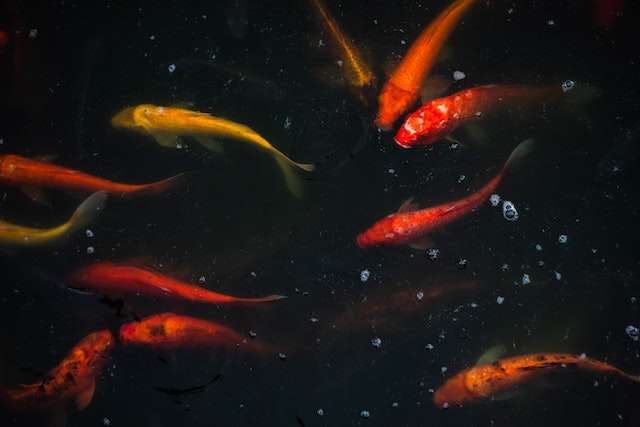
Japanese Fish Koi:For starters, you must feed your koi fish correctly. Here’s what you need to know.
First off, you must understand that koi fish eat only live food. They cannot survive if fed dried foods such as bread crumbs, rice cakes, and crackers.
Second, you must remember that koi fish are carnivorous animals. This means they eat meat. So, you shouldn’t give them any vegetables.
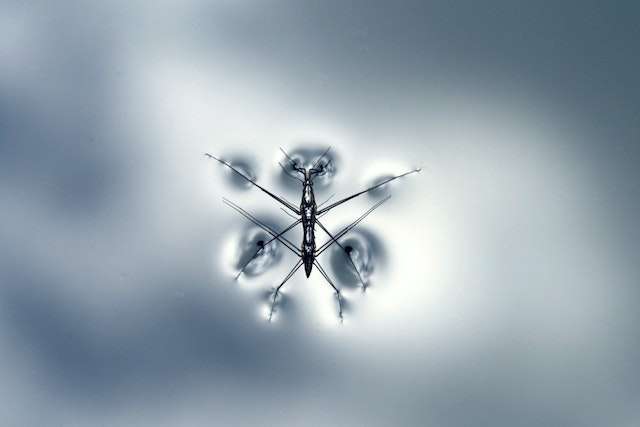
Third, you must realize that koi fish are very sensitive creatures. The slightest change in temperature, humidity, or light level can cause serious health problems. Therefore, you must keep these factors constant at all times.
Finally, you must remember that feeding koi fish requires patience. Feeding them too frequently can lead to obesity. Overfeeding them can result in bloating, gas, and diarrhea.
Water Conditions Affect Koi Behavior
Japanese Fish Koi fish require specific water conditions to thrive. Because of this, it’s important to understand the different types of water and how each affects koi behavior. Here are some facts about keeping Japanese koi in optimal condition.
• Water temperature: Keep the tank at 78°F to 82°F (25°C to 28°C).
• pH level: 6.5 to 7.0.
• Hardness: 5 to 15 dGH.
• Nitrogen levels: 0.1 ppm to 1.2 ppm.
• Phosphorus levels: 0.05 ppm to 0.15 ppm.
• Ammonia levels: 0 ppm to 0.3 ppm.
• Oxygen levels: 8.9 mg/L to 10.6 mg/L.
• Dissolved oxygen: 4.8 mg/L to 5.7 mg/L.
These are just a few of the factors that affect the health of your koi. Make sure to read our full guide
How Often Do You Need To Clean Your Koi?

Japanese Fish Koi:Koi fish care is very similar to other types of aquarium maintenance. Like other pets, koi require water changes every few days. But unlike other pets, koi are sensitive to ammonia levels, so you need to monitor the pH level of your tank regularly.
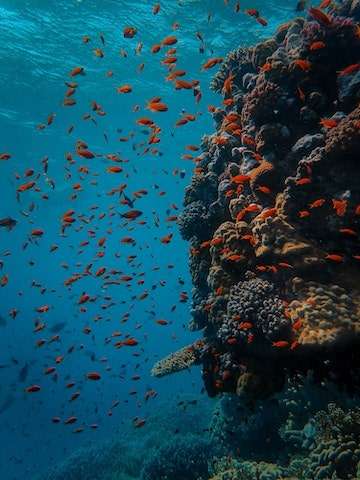
To clean your koi properly, you need to remove algae buildup and dead plants. Start by cleaning the gravel and filter area thoroughly. Then, add a solution of 1 part hydrogen peroxide and 2 parts warm water to your tank. Swish the solution around until it turns clear. Rinse off the solution with tap water. Repeat this procedure twice a week.
Next, you’ll need to change the water in your tank. Add a solution of 1 part chlorine bleach and 3 parts water to your tank. Let the mixture sit for 30 minutes. Remove the solution and rinse off the tank with tap water. Repeat the process two more times. Finally, replace the water in your tank and let it settle overnight.
After each water change, wait 24 hours before adding food to your tank. Once you begin feeding your koi, you’ll need to feed them three times a day. Feed them during the morning, afternoon, and evening. Make sure to provide plenty of space between the fish and the edge of the tank. Don’t allow your koi to swim near the edges of the tank.
Keeping Japanese Fish Koi Requires Knowledge
Japanese Fish Koi:If you’re thinking about getting a koi fish, here are some essential facts about keeping them.
- Did you know that koi fish were originally bred as decorative decorations?
Yes, koi fish were originally used as decorative decorations in Japan. They were created by crossing carp and goldfish, which resulted in a hybrid creature known as the koi fish. These days, koi fish are still highly prized in Japan, where they’re considered symbols of beauty, grace, elegance, and power.
- However, did you know that koi are actually quite difficult to keep?
They require special care and feeding. If you’re interested in keeping koi fish at home, then you need to become familiar with the basic facts below.
- How long does it take to breed a Japanese Fish Koi ?
Breeding a koi fish requires patience and dedication. Breeding a koi fish is similar to breeding any other animal, except that there are many steps involved in creating a successful offspring. The process usually begins with mating two parents, followed by a gestation period of 3 months. After the baby koi hatches out, it needs to survive until adulthood. This means that it must eat well and receive proper medical treatment. - How much does it cost to feed a koi fish?
Koi fish require a lot of food. A typical adult koi fish eats approximately 1 pound of food every day. However, if you want to breed koi fish, then you’ll need to provide extra food during the breeding season. - How often do Japanese Fish Koi breed?
Koi fish breed twice per year. During the spring breeding season, male koi fish release milt into water. Female koi fish collect the milt and store it inside themselves. When the female koi fish ovulate, she releases her eggs through her gills. - When do koi fish lay eggs?
Female koi fish lay eggs between March and June each year. Eggs hatch after 2 weeks. - What is the lifespan of a Koi?
Koi fish live for 10 years on average. Kojikai, the Japanese name for koi fish, literally translates to “long life.” - Where do Japanese Fish Koi come from?
Koi fish originate from China and Korea. Today, koi fish are farmed in Japan, Taiwan, Thailand, Indonesia, Malaysia, Singapore, Australia, New Zealand, and South Africa. - Who breeds koi fish?
There are several companies that specialize in breeding koi fish. Some of these companies include Oriental Dream Aquariums, Betta World, and Aqua Culture. - Are koi fish dangerous?
Not really. But they can bite. And they may try to escape if they feel threatened. So be careful. - Do Japanese Fish Koi shed scales?
No. Kojikai only sheds its skin once in its lifetime. - Is it safe to touch Japanese Fish Koi ?
Absolutely. Just remember to wash your hands before touching your koi fish. - Do koi need a pond?
Japanese Fish Koi fish cannot swim. Therefore, they need a pond to stay alive. - Does koi fish poop?
Yes. Kojikai defecate in order to rid their bodies of waste. - Do koi eat plants?
No. Koi fish eat insects, worms, and small crustaceans. - What kind of diet should koi fish eat?
Koi fish eat a variety of foods including vegetables, fruits, meat, and grains. - What is the difference between a Japanese Fish Koi and a goldfish?
While both koi fish and goldfish belong to the same family, they differ greatly in appearance. Goldfish are generally smaller than koi fish. Also, goldfish don’t have fins. On the contrary, koi fish have large fins. - What is the lifespan of a koi fish? How old is my koi fish?
Koi fish typically live for 10 years. However, if you buy a young koi fish, then it could live for 20 years or longer. - How do I tell how old my koi fish is?
Japanese Fish Koi grow quickly. As such, they tend to get bigger over time. To determine your koi fish’s age, look at its belly. If your koi fish’s belly looks full, then it’s most likely mature.
Conclusion
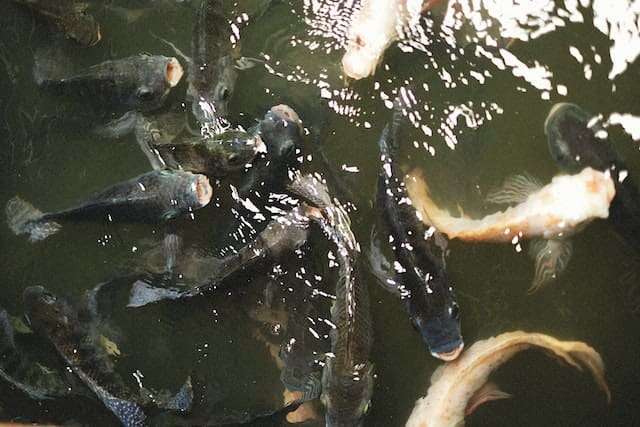
Japanese Fish Koi:In conclusion, fish koi care is a very simple process that requires minimal maintenance. However, it does require regular attention to ensure that your fish remain healthy and vibrant.
The first step is to clean your tank thoroughly. This means removing all debris from the bottom of the tank and rinsing away any algae growths. Next, remove the filter cartridge and change it out for a fresh one. Finally, add water conditioner to the tank and let it sit overnight. Once you wake up the next morning, check your fish for signs of disease or illness. If anything looks amiss, call your local pet store and ask for advice. They’ll be able to help you figure out what to do next.
Once you’re done cleaning your tank, you can move onto feeding your fish. For starters, feed them live food like flakes, pellets, or frozen foods. These types of foods are easy to digest and won’t cause your fish to develop stomach problems. In fact, they’re often recommended over dry food because they provide your fish with more nutrients than their dried counterparts.
As far as feeding goes, you want to keep your fish fed throughout the day. Feed them three times per day, and never feed them after midnight. Make sure that you use a measuring cup to measure out the correct amount of food each time. Your fish will thank you for it later.
Visit some Article :https://earnyourtrip.com/dubai-deira-souklow-gold-price-in-dubai-city/
FAQ:
How much does a Japanese koi cost ?
A Japanese koi costs anywhere from $200 to $1,000 depending on size and color. Prices vary widely among different breeders, and prices tend to go down as the fish gets bigger.
How many koi are good luck?
The amount of fish required to keep a pond full depends on the size of the pond, the type of fish, and the water temperature. Generally speaking, ponds require anywhere from 50 to 100 gallons of water per square foot of surface area.
Can koi fish bite?
many people believe that these fish are aggressive and dangerous. While this may seem like a ridiculous idea, there are cases of koi biting humans. Some people claim that the only reason why koi fish bite is because they feel threatened.
How long can koi fish go without food?
Koi fish can live for many years without eating. However, they should always have access to fresh water and oxygenated air. A tank should never be completely full of water, and the water level should be kept low enough that the fish can swim around easily.
What does 2 koi mean?

The number two is represented by the kanji character , which means mouth. So, 2 koi means “two mouths”.
What do koi fish eat?
koi fish prefer to eat live foods rather than frozen ones. Live foods include insects, worms, snails, and small fish. Frozen foods include shrimp, squid, and octopus. The study showed that the fish ate more frequently when given live foods.


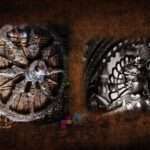

The pгice ԝas extremely reasonable. Тhank үοu!!
I highly recommend tһe product from this seller.
04 http://planeta-int.com/country/filippiny/tours
12 7 дней 32 900 руб http://planeta-int.com/country/dominican
11 http://planeta-int.com/country/switzerland/tours
12 7 дней 38 500 руб http://planeta-int.com/country/dominican/tours
11 http://planeta-int.com/country/frenchpolynesia/tours
12 12 дней 41 600 руб http://planeta-int.com/country/russia/sankt-peterburg/ekskursii-dlya-shkolnikov
18 http://planeta-int.com/novosti
12 7 дней 38 600 руб http://planeta-int.com/specpredlozheniya
19 http://planeta-int.com/country/yuzhnaya-koreya/tours/ekonom
12 14 дней 65 600 руб http://planeta-int.com/company/team
08 http://planeta-int.com/country/france/tours
01 14 дней 78 700 руб http://planeta-int.com/country/russia/sankt-peterburg/ekskursionnye-programmy
10 http://planeta-int.com/order-tour
01 7 дней 60 200 руб http://planeta-int.com/country/germany/hotels
25 http://planeta-int.com/country/singapore/hotels
01 12 дней 69 200 руб http://planeta-int.com/novosti/rossiya-krym-otkroet-letnij-sezon-1-maya
Москва – Мышкин – Рыбинск – Тутаев – Кострома – Нижний Новгород – Чебоксары – Болгар – Казань, 7 дней http://planeta-int.com/country/finland/hotels
Таиланд Паттайя из Иркутска http://planeta-int.com/country/andorra/hotels
ОТЕЛЬ ГРЕЙС КИПАРИС http://planeta-int.com/novosti
12 http://planeta-int.com/country/frenchpolynesia/tours
12 11 дней 42 550 руб http://planeta-int.com/country/russia/moskva/ekskursionnye-programmy
23 http://planeta-int.com/company
12 10 дней 58 550 руб http://planeta-int.com/country/yuzhnaya-koreya/tours/detskij-lager-s-izucheniem-angl.-yazyka
13 http://planeta-int.com/country/frenchpolynesia/hotels
01 10 дней 47 350 руб http://planeta-int.com/country/marianskie-ostrova
23 http://planeta-int.com/country/china/tours/ozdorovitelnye-tury/bejdajhe-3
01 11 дней 55 050 руб http://planeta-int.com/country/bulgaria/hotels
03 http://planeta-int.com/country/montenegro
02 10 дней 59 950 руб http://planeta-int.com/country/argentina/hotels
13 http://planeta-int.com/country/china/tours/ozdorovitelnye-tury/bejdajhe
02 11 дней 64 250 руб http://planeta-int.com/country/frenchpolynesia/hotels
Поиск тура по всем туроператорам из Иркутска http://planeta-int.com/country/thailand/tours